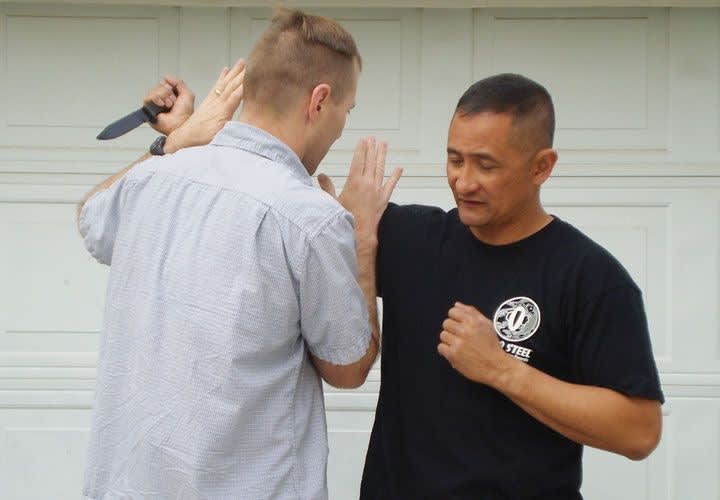After a five-block foot pursuit, the 6-foot 4-inch, 260-pound suspect led Alva and his partner, Officer Jay Chambers, inside a house. The suspect ran into the kitchen area as Alva and Chambers entered the house. "As soon as we were inside we saw the suspect with a large knife held in the 'ice pick' grip, just like in the movie Psycho," recalled Alva.
Immediately the suspect lunged to cover the 11 feet between himself and Chambers, who didn't have a chance to draw his gun.
Alva fired three shots, all of them hitting the suspect's chest.
But the suspect didn't seem to notice that he had been shot as he began to slash Chambers and a struggle for the knife ensued. The suspect knocked Chambers down and landed on top of him, slashing the officer's face and making a deep cut from his left eye, across his nose, and down to his chin. All of this happened very quickly.
The slashing continued as Chambers and the suspect struggled for the knife. Knowing that his partner was taking potentially lethal wounds, Alva quickly got into position and fired two more shots into the suspect.











